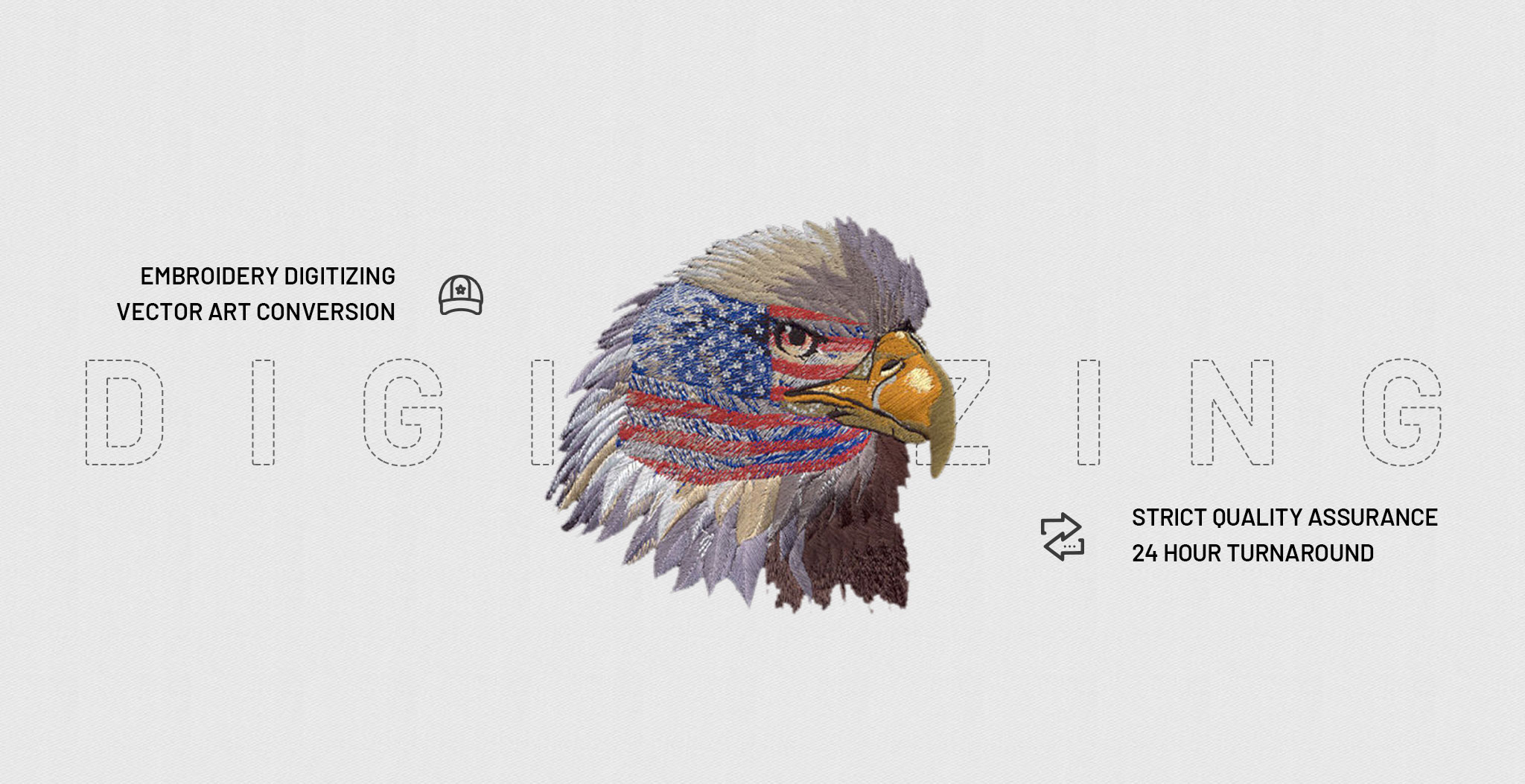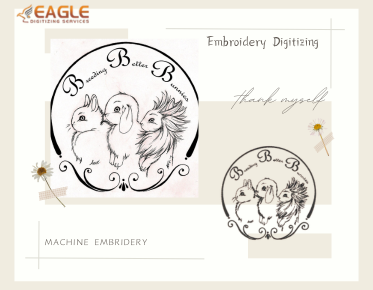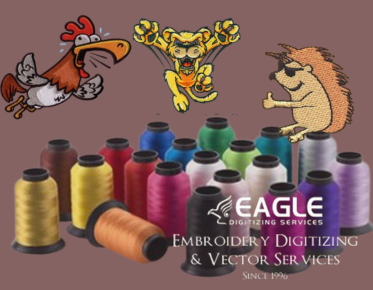Digitizing Glossary
Appliques: Applique is one method of digitizing. It involves trimming that has been cut from one piece of fabric and stitching it to another to add dimension and texture. When applique takes up a significant portion of the design, the stitch count is lower. |
ASI: ASI is the acronym for Advertising Specialty Institute, which has been providing award-winning products and services to the advertising, specialty, and promotional products industry for over 50 years. ASI publishes print and online business magazines, product catalogs, Web sites, and informational directories. |
Backing: Woven or non-woven material used underneath the item or fabric being embroidered to provide support and stability for the needle penetration. Best used when hooped with the garment, but also can be placed between the item to be embroidered and the needle plate on flat bed machines. Available in many styles and weights with two basic types (Cutaway and Tearaway). |
Bean: A bean stitch is a running stitch that goes from point A to point B, back from point B to point A, and again from point A to point B. |
Compensation: Embroidery Digitizing (Punching) technique used to counteract the distortion caused by the interaction of the needle, thread, backing and machine tensions. Also a programmable feature in some software packages. |
Copyrighted: If a customer sends a picture of a logo or artwork to be digitized, it will be assumed that the customer either owns the copyright or has received, from the copyright owner, written permission to use the image for machine embroidery. To protect the customer from copyright infringement, the customer will be asked to show written permission when sending a nationally recognized logo. |
Digitizing or Punching: Digitizing and Punching are universal terms for the digital means of converting artwork into vector commands that are readable by an embroidery machine’s computer, and determine needle penetrations, color changes, stitch characteristics, start and stop points, and so on. |
Digitizing Tape: To embroider a shirt or baseball cap, the customer need a digitizing file, sometimes referred to a tape because the old embroidery machines used punched paper tapes and a tape reader to operate. With new technological advancements, 3.5" floppy diskettes are now more common in the industry. An Embroidery Disk and a Digitizing Tape contain all the instructions that tell the embroidery machine what to stitch on the garment. |
Database: A set of related files that is created and managed by a database management system (DBMS). Today, DBMSs can manage any form of data, including text, images, sound and video. Database and file structures are always determined by the software. As far as the hardware is concerned, it's all bits and bytes. |
Embroidery: Decorative stitching on fabric. Generally involves non-lettering designs but can also include lettering and/or monograms. Embroidery is a part of many historical narratives, such as the reign of the Egyptian pharaohs, the writings of Homer, and the Crusaders of the 12th century. Through the years, the process has evolved from hand work to manual sewing machines, and from hand-looms to hundred-needle schiffli machines to high-speed, computerized multi-head machines. |












Recent Articles
Latest Blog Post
Want to Create Vector Graphics Yourself? Best Software for Beginners
Vector graphics creation can be both a rewarding and daunting task, especially if you're new to graphic design. Fortunately, there are numerous software tools...
Read More10 Pro Vector Art Tips to Become an Expert Vector Artist
Becoming an expert vector artist comes with a combination of mastering technical skills, understanding art principles, and continuous learning. Whether you're an...
Read MoreA Guide to Launching a Profitable Hat Embroidery Business
Starting a hat embroidery business can be a rewarding venture, combining creativity with entrepreneurship. With the right approach, you can turn your passion for...
Read More

.png)
